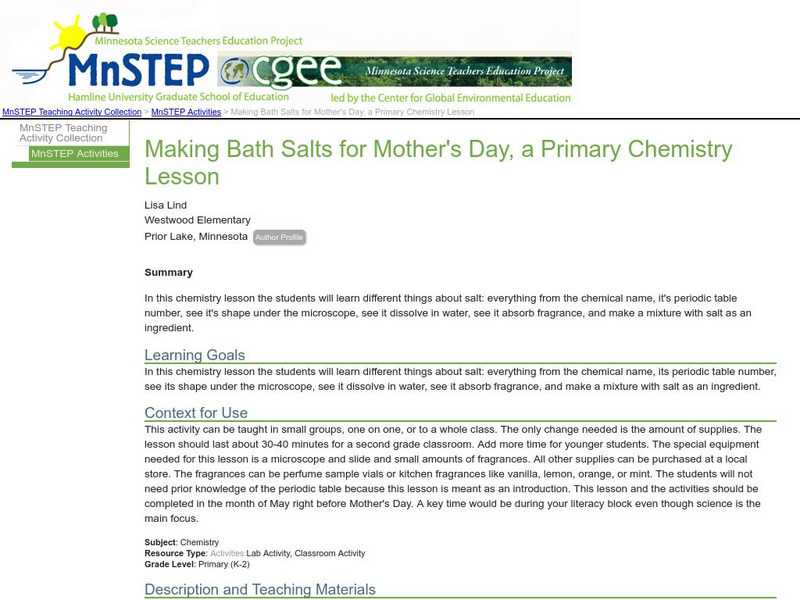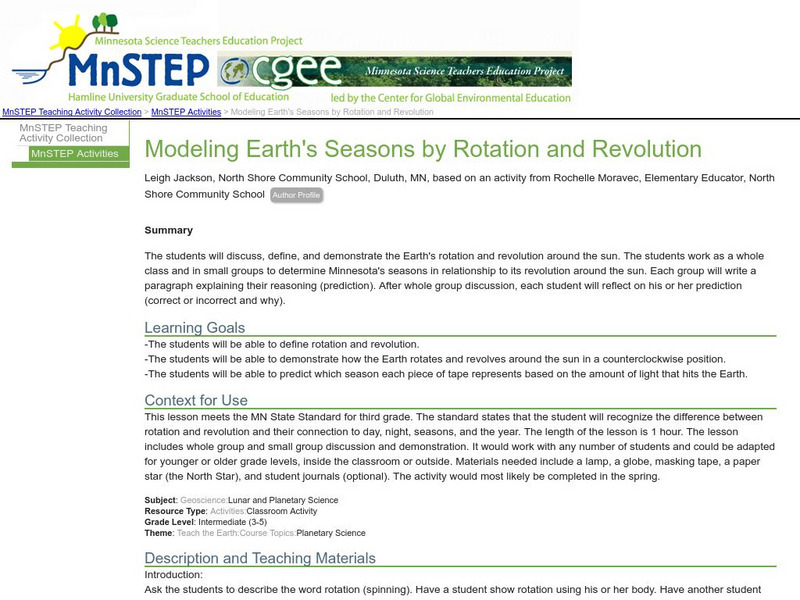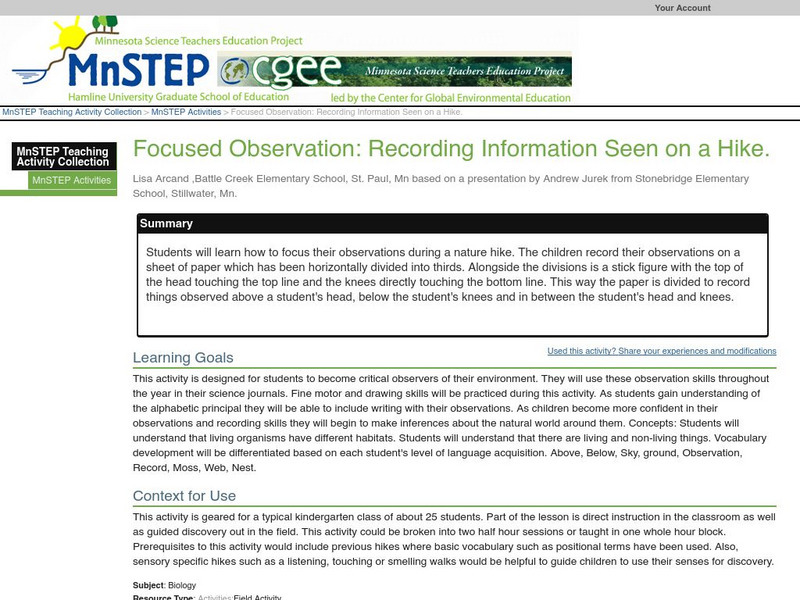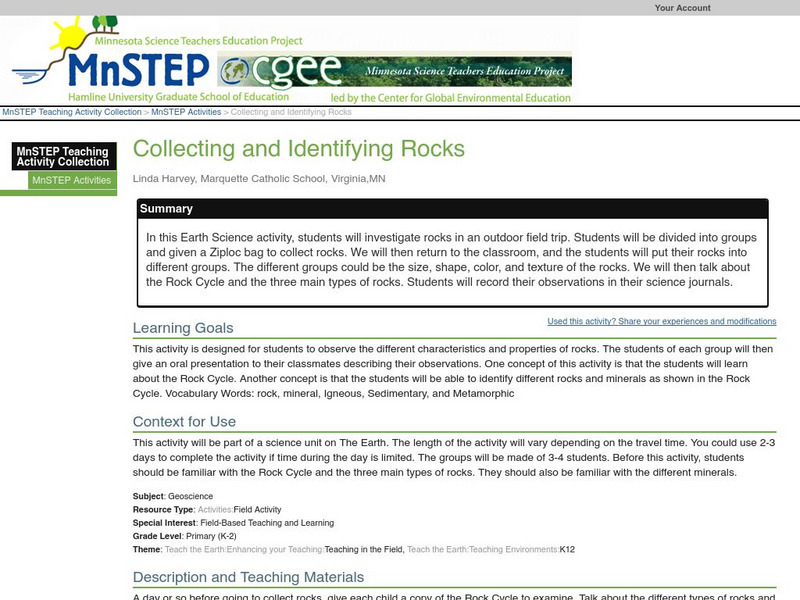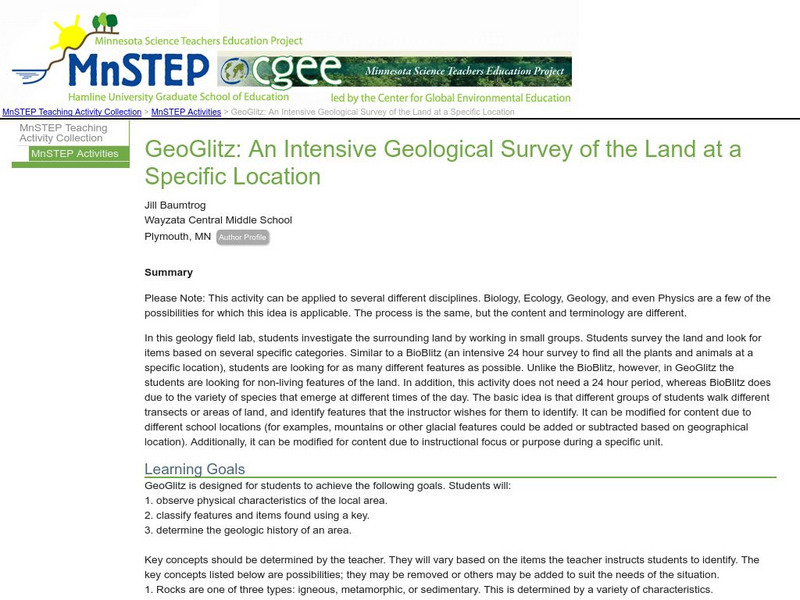Science Education Resource Center at Carleton College
Serc: Making Bath Salts for Mother's Day, a Primary Chemistry Lesson
What do you know about salt? In this chemistry lesson, students will learn different things about salt: the chemical name, it's periodic table number, it's shape under the microscope, how it dissolves in water, and how to make a mixture...
Science Education Resource Center at Carleton College
Serc: Modeling Earth's Seasons by Rotation and Revolution
In this lesson, students will discuss, define, and demonstrate the Earth's rotation and revolution around the sun in a counterclockwise position. They will be able to predict seasons based on the amount of light that hits the Earth.
Science Education Resource Center at Carleton College
Serc: High and Low Pressure
Students will experience a hands on reference for high and low pressure as it relates to air movement. This activity will help with understanding high and low pressure behavior.
Science Education Resource Center at Carleton College
Serc: Investigating Atmospheric Pressure With a Cup, Straw and Water
In this classroom lab activity, students will work with a plastic cup, straw, and drinking water to gain a better understanding of how atmospheric pressure works. They will be able to see how an imbalance in the atmosphere causes a...
Science Education Resource Center at Carleton College
Serc: Focused Observation: Recording Information Seen on a Hike
Students focus their observations during a nature hike by recording their observations on a sheet of paper which has been horizontally divided into thirds. Alongside the divisions is a stick figure with the top of the head touching the...
Science Education Resource Center at Carleton College
Serc: Collecting and Identifying Rocks
Students investigate rocks in an outdoor field trip, and then place them into groups by characteristics. The different groups could be the size, shape, color, and texture of the rocks. After classifying, students are introduced to the...
Science Education Resource Center at Carleton College
Serc: Investigating How Do Clouds Form? What Are the Different Types of Clouds?
In this investigation, students will observe and learn about the different types of clouds and be able to explain in their own words how clouds are formed. They will also observe an experiment illustrating how clouds form.
Science Education Resource Center at Carleton College
Serc: Looking at Clouds: Making a Book That Identifies Cloud Types
While creating their own cloud book, learners will identify and classify the different cloud types and the weather conditions that they bring.
Science Education Resource Center at Carleton College
Serc: Intro to Chemistry Tools and Vocabulary Through Word Walls and Centers
In this activity, students will be exposed to introductory words along with names and pictures of tools in the chemistry classroom. They will be exposed to the vocabulary by looking at and reciting words from a slide show and then as a...
Science Education Resource Center at Carleton College
Serc: Mn Step: Sinking and Floating Water
An experiment in density where colored water, both hot and cold, are poured into containers of water at room temperature. Students will observe that the warm water rises and the cold water sinks due to their different densities.
Science Education Resource Center at Carleton College
Serc: Quantum Physics: An Introduction
Interactive demonstration provides students with an introduction to Quantum Physics. They will also be introduced to wave/particle duality, Heisenburg Uncertainty Principle, superposition, Schrodinger's cat, and wavefunction.
Science Education Resource Center at Carleton College
Serc: Exploring Molecular Movement: Does Temperature Matter?
In this interactive demonstration, young scholars observe what happens to food coloring when dropped into beakers containing different temperatures of water.
Science Education Resource Center at Carleton College
Serc: Combustion or Oxidation
Students burn a magnesium strip to reinforce the concepts of chemical vs. physical changes, reaction types, conservation of mass, formulas and equations, stoichiometry, Lewis structures, and to explore the concept of oxidation/reduction...
Science Education Resource Center at Carleton College
Serc: Molar Volume of a Gas Determined via a Reaction
During this experiment, learners will react magnesium with hydrochloric acid to produce hydrogen gas which is collected inside a flask that has a Vernier Gas Pressure Sensor connected to it in order to determine the molar volume of a...
Science Education Resource Center at Carleton College
Serc: Mn Step: Signs and Tracks of Animals
A detailed lesson plan outlining how learners are introduced to the topic of animal tracking, and how their knowledge and vocabulary are carefully expanded. Students are shown 'evidence' of an animal having been present, and must...
Science Education Resource Center at Carleton College
Serc: Le Chatlier's Principle: Determining Color of Nitrogen Dioxide
Students observe the effects of temperature change on the color of nitrogen dioxide and dinitrogen tetroxide by manipulating glass tubes containing the gases at equilibrium. Then, they write a balanced equation for the reaction and...
Science Education Resource Center at Carleton College
Serc: Mn Step: Stream Study: Assessing the Relative Health of Streams
Students will collect invertebrate samples from three different streams using nets and kick-seines. They then identify what they have found and add the information to the whole class data. Afterward, students propose a new question about...
Science Education Resource Center at Carleton College
Serc: A Study of Spider Webs
Many people do not like spiders and consider them pests. However, spiders provide a service to humans. They eat many of the insects that bother people. In this 7th grade life science activity, students will study 4-6 spider webs and...
Science Education Resource Center at Carleton College
Serc: Exploring Effects of Oil Spills on Birds
To learn about the devastating effects of oil spills, students use magnifying lenses to examine feathers, and name and describe characteristics of the feathers.
Science Education Resource Center at Carleton College
Serc: Mn Step: Sponge Lab: Experimenting With Absorption
Students investigate the properties of synthetic and natural sponges in this activity, to determine the capacity of each to absorb water. Afterward, they discuss other questions they have about sponges, and complete an assessment in...
Science Education Resource Center at Carleton College
Serc: Mystery Material: Is It a Solid or a Liquid?
Is it a solid or a liquid? In this activity, students will handle a mystery substance that has qualities of both a solid and a liquid while learning about phases. They will manipulate the substance, record any observations they...
Science Education Resource Center at Carleton College
Serc: Geo Glitz: Intensive Geological Survey of the Land at a Specific Location
In this geology field lab, students investigate the surrounding land by walking different transects of the ecosystem, looking for and identifying as many different living and nonliving ecosystem features as possible
Science Education Resource Center at Carleton College
Serc: Conservation of Momentum Using Rollerblades and a Medicine Ball
In this guided inquiry demonstration, a person on rollerblades and a medicine ball are used to teach the concept of conservation of momentum. Various sorts of collisions are used to show how momentum is conserved within a system.
Science Education Resource Center at Carleton College
Serc: Investigating Rock Layers and Fossils to Infer Past
This activity is an inquiry-based field investigation of the sedimentary geology of Lilydale Regional Park's brickyards area, a bluff and slope location near St. Paul Minnesota's Harriet Island and Cherokee Heights Park. Students...


